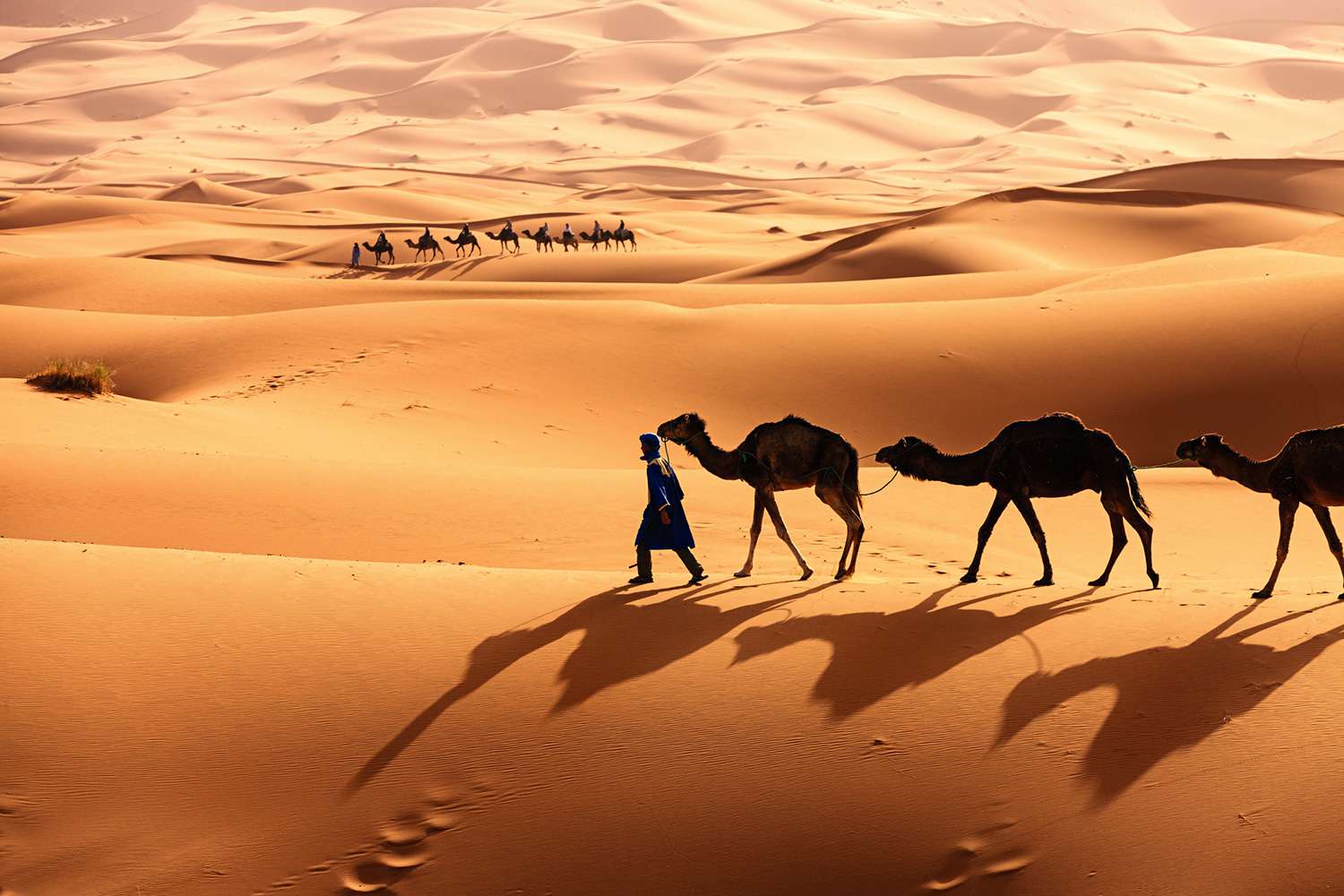
Deserts are fascinating and awe-inspiring landscapes that cover nearly one-third of the Earth’s land surface. These vast stretches of arid land are often associated with extreme heat, sand dunes, and a lack of vegetation. However, there is much more to deserts than meets the eye. From incredible adaptations to unique geological formations, deserts are full of mind-blowing facts that will leave you amazed.
In this article, we will uncover 12 of the most mind-blowing facts about deserts. These facts will take you on a journey through some of the world’s most mesmerizing and inhospitable environments. So, buckle up and get ready to delve into the mysterious world of deserts. From astonishing survival strategies to remarkable natural wonders, these facts will leave you with a newfound appreciation for the beauty and resilience of these seemingly desolate landscapes.
Key Takeaways:
- Deserts are diverse and fascinating landscapes, from the Sahara’s vast sand dunes to the Atacama’s extreme dryness. They support unique flora and fauna, playing a crucial role in our planet’s ecosystem.
- Exploring deserts offers thrilling adventures, from camel rides to stargazing. Desert sand can even be used for construction, showcasing the surprising versatility of these remarkable landscapes.
The Sahara Desert is the largest hot desert in the world.
Covering an astonishing 9.2 million square kilometers, the Sahara Desert stretches across much of North Africa. Its arid climate and vast sand dunes make it a remarkable sight to behold.
The Atacama Desert is the driest non-polar desert on Earth.
Located in Chile, the Atacama Desert receives very little rainfall. Some areas of the desert have never recorded any precipitation, making it an extreme environment for life.
The Arabian Desert is the largest continuous sand desert in the world.
Encompassing most of the Arabian Peninsula, this desert is famous for its iconic sand dunes and harsh climatic conditions. It spans across multiple countries, including Saudi Arabia, Oman, Yemen, and the United Arab Emirates.
The Namib Desert is home to the world’s highest sand dunes.
Stretching along the coast of Namibia, the towering dunes of the Namib Desert create a mesmerizing landscape. These dunes can reach heights of over 300 meters, providing a stunning natural spectacle.
The Gobi Desert is the largest desert in Asia.
Spanning parts of northern China and southern Mongolia, the Gobi Desert is known for its diverse ecosystems and extreme temperature fluctuations. It is home to various unique species of plants and animals adapted to its harsh conditions.
The Antarctic Desert is the largest desert in the world.
While it may seem counterintuitive, the frozen landscape of Antarctica qualifies as a desert due to its minimal precipitation. With its vast stretches of ice and barren terrain, it is the coldest and driest continent on Earth.
The Mojave Desert is home to Joshua Trees.
Located primarily in California, the Mojave Desert is known for its distinctive Joshua Trees. These unique trees have spiky leaves and can survive in the desert’s harsh conditions, symbolizing resilience and adaptability.
The Thar Desert is one of the most densely populated deserts.
Situated in northwestern India, the Thar Desert is home to a large population that has adapted to its arid environment. With vibrant culture, traditions, and captivating landscapes, the Thar Desert is a fascinating destination to explore.
The Danakil Depression in Ethiopia is one of the hottest places on Earth.
With scorching temperatures that can exceed 50 degrees Celsius, the Danakil Depression is renowned for its extreme heat and surreal landscapes. It is also home to vibrant lava lakes and colorful geothermal springs.
Deserts play a crucial role in the planet’s ecosystem.
Despite their harsh conditions, deserts support a unique array of flora and fauna that have adapted to survive in arid environments. They serve as vital habitats for various species and play a crucial role in maintaining the ecological balance of our planet.
Desert sand can be used for construction.
Due to its high silica content and uniform grain size, desert sand has been utilized in construction projects such as making concrete and bricks. However, not all types of desert sand are suitable for these purposes.
Desert tourism offers exciting adventures.
From thrilling camel rides and sandboarding to stargazing in the vast night skies, desert tourism provides unique experiences for adventurous travelers. Exploring the deserts allows you to witness the breathtaking beauty and tranquility of these landscapes.
Conclusion
Deserts are truly fascinating and enigmatic landscapes that hold a myriad of mind-blowing facts. From the extreme temperatures to the remarkable adaptations of desert-dwelling plants and animals, there is so much to discover and appreciate about these barren yet beautiful regions.
Exploring the vastness of deserts unveils the unique geological formations, such as towering sand dunes and rugged rock formations, that have been shaped over millions of years. The deserts also play a crucial role in the Earth’s ecosystem, serving as habitats for specialized plants and animals and providing a valuable understanding of climate patterns.
Furthermore, the deserts possess an incredible allure with their stunning sunsets, star-filled night skies, and a sense of solitude that draws adventurous souls seeking a connection with nature. Whether you’re an adrenaline junkie craving the thrill of dune bashing or a wildlife enthusiast captivated by the survival tactics of desert species, the deserts offer endless opportunities for exploration and awe-inspiring experiences.
FAQs
1. Why are deserts so hot during the day and cold at night?
Deserts experience extreme temperature fluctuations because of their lack of moisture and vegetation cover. During the day, the absence of clouds and vegetation allows the sun’s heat to penetrate the ground, leading to scorching temperatures. At night, the heat quickly dissipates as there are no clouds or humidity to trap it, resulting in cold temperatures.
2. Are there any plants and animals that can survive in deserts?
Yes, deserts are home to a variety of flora and fauna that have adapted to the harsh conditions. Some examples of desert plants include the cactus, agave, and Joshua tree, while animals like camels, coyotes, and kangaroo rats have developed special adaptations to conserve water and withstand extreme temperatures.
3. How large are deserts in comparison to other geographical features?
Deserts cover around 1/3 of the Earth’s land surface, making them one of the largest environmental features on our planet. They can vary in size from small desert formations to vast expanses like the Sahara Desert in Africa or the Gobi Desert in Asia.
4. What causes sand dunes to form in deserts?
Sand dunes are formed when wind carries loose sand particles and deposits them in mounds or hills. The shape and size of the dunes are influenced by wind patterns, available sand supply, and the presence of obstructions that cause the sand to accumulate.
5. Do deserts have any significance in terms of global climate?
Yes, deserts play a crucial role in the Earth’s climate system. They influence atmospheric circulation patterns, affect the heat balance of the planet, and can act as indicators of climate change. Studying desert climates helps scientists understand weather patterns and predict long-term climate trends.
Deserts are truly fascinating, but there's so much more to explore! Uncover the unique DesertEcosystem of California's arid landscapes, learn how to stay safe during ExtremeWeather events like floods, and be amazed by the stunning beauty of SandDunes. Each topic offers a captivating journey into the wonders of our planet, so why not dive in and discover something new today?
Was this page helpful?
Our commitment to delivering trustworthy and engaging content is at the heart of what we do. Each fact on our site is contributed by real users like you, bringing a wealth of diverse insights and information. To ensure the highest standards of accuracy and reliability, our dedicated editors meticulously review each submission. This process guarantees that the facts we share are not only fascinating but also credible. Trust in our commitment to quality and authenticity as you explore and learn with us.


